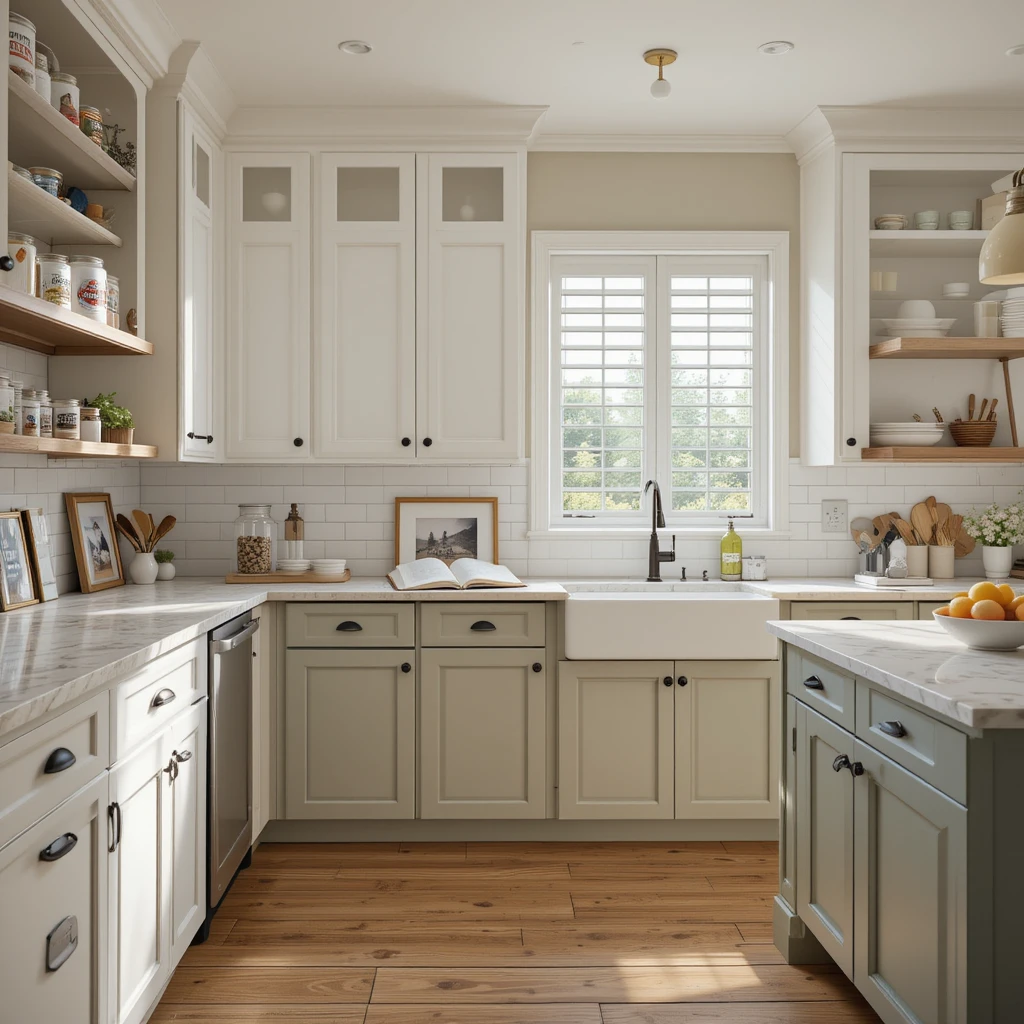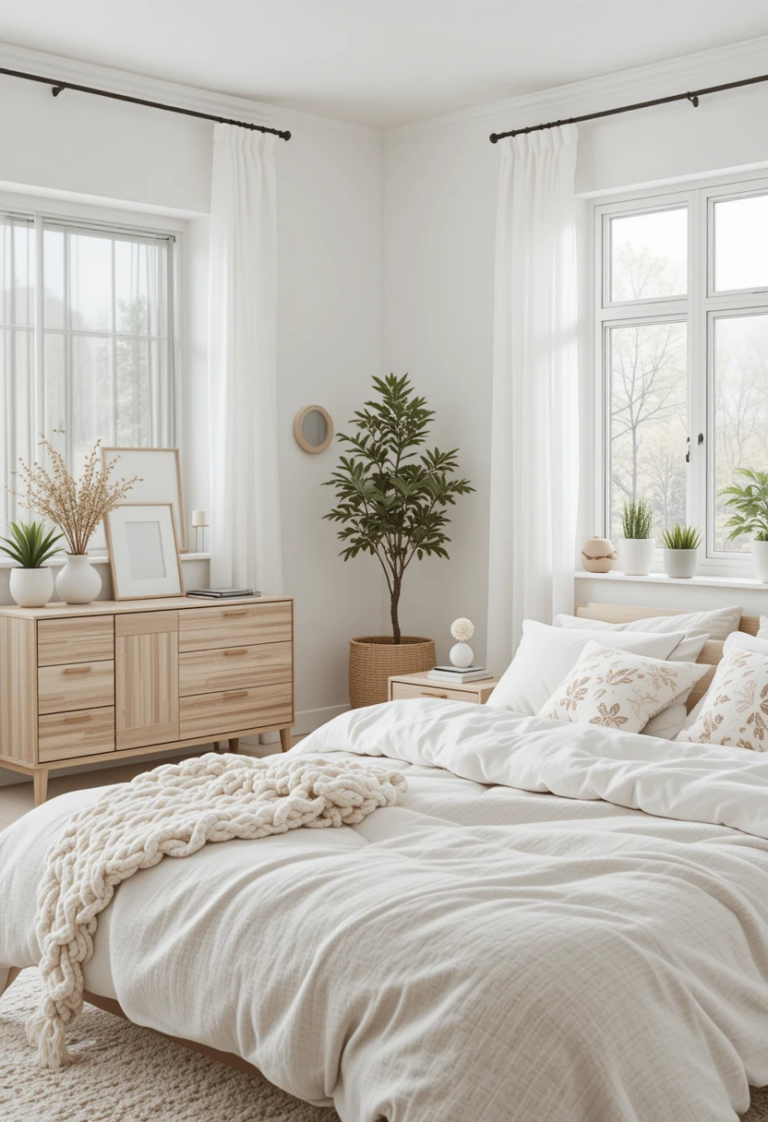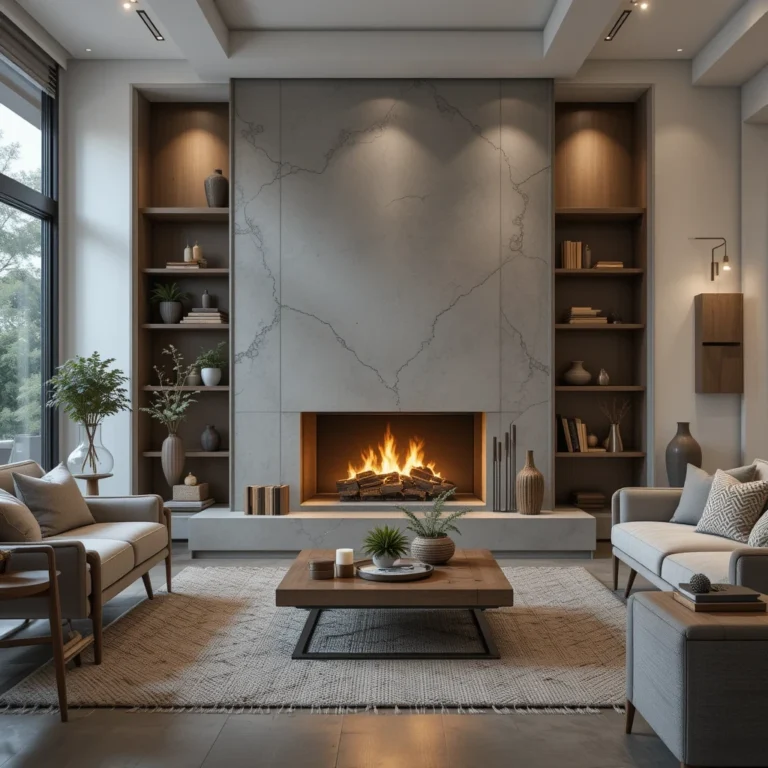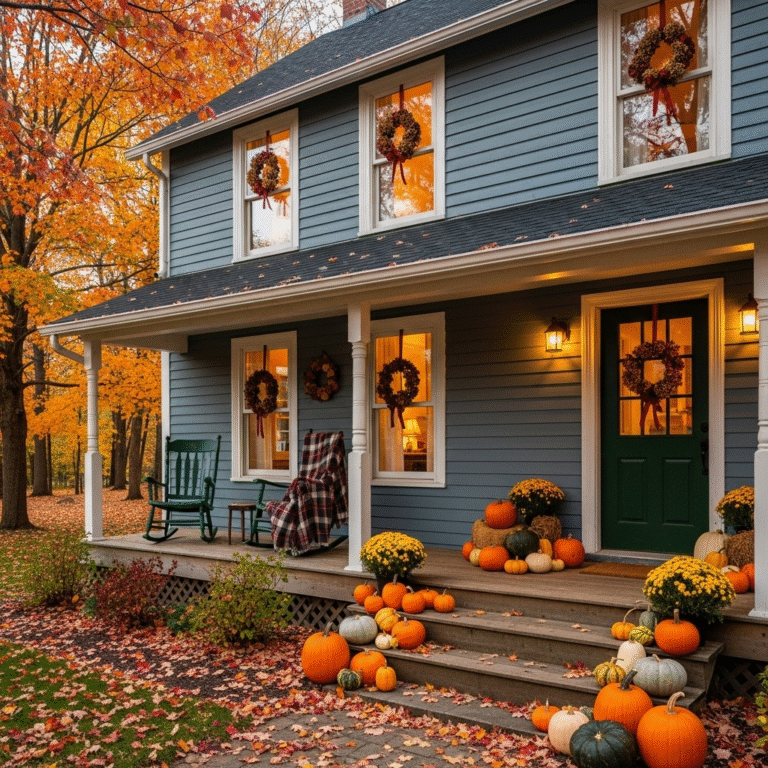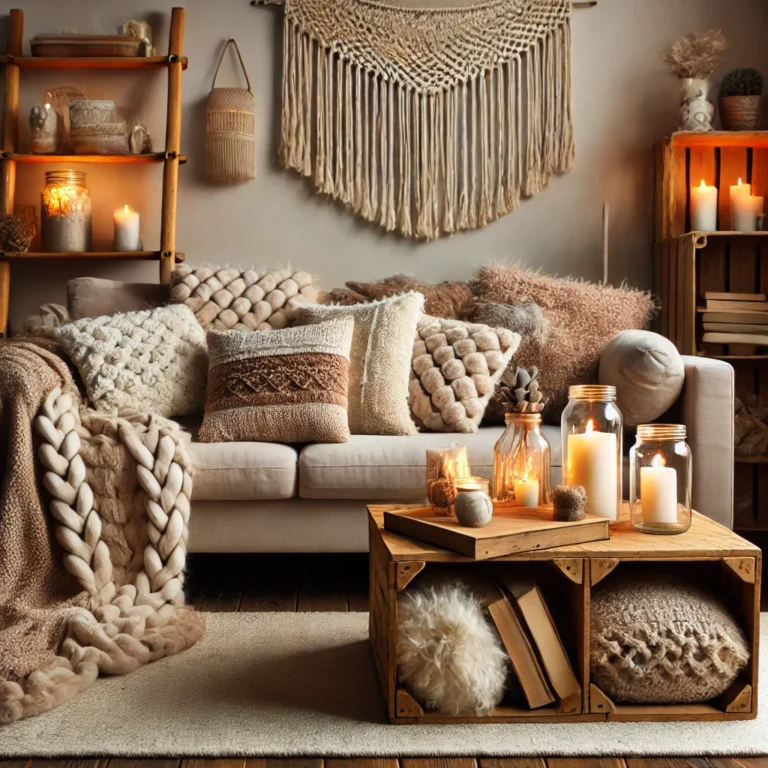Kitchen Cabinet Painting: The Ultimate 2025 Guide to Transforming Your Kitchen
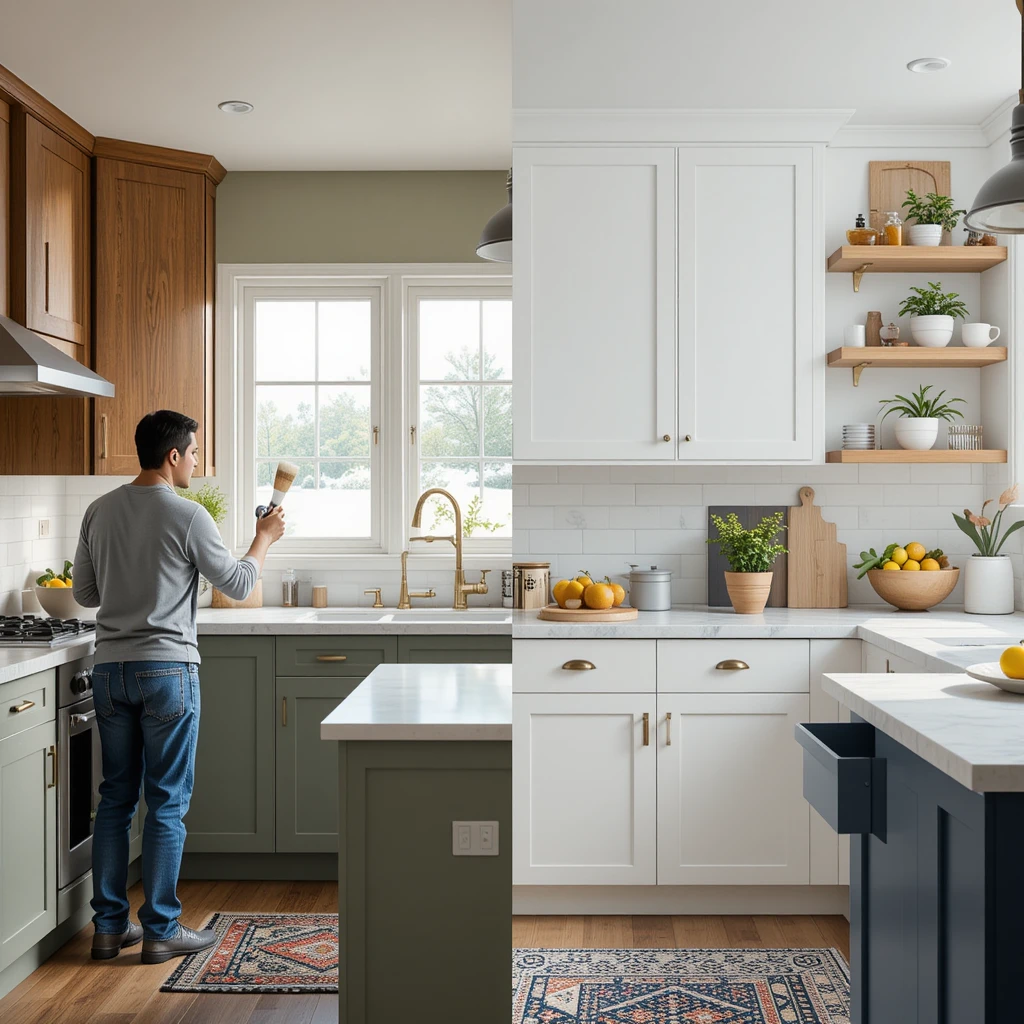
Introduction
Kitchen cabinet painting is one of the most effective ways to give your kitchen a fresh, modern, and personalized look without the hefty price tag of a full renovation. In 2025, homeowners are focusing more on cost-effective yet stylish updates that can completely transform the space. Whether you’re aiming for a sleek minimalist style, a cozy farmhouse charm, or a bold statement kitchen, the right approach to cabinet painting can make it happen.
In this comprehensive guide, we’ll explore everything from how to paint kitchen cabinets without sanding to the best paint for kitchen cabinets in 2025, the cost of professional cabinet painting, and whether you should paint or reface cabinets. You’ll also find pro tips, step-by-step methods, pros and cons, and insider advice to make sure your project is a success.
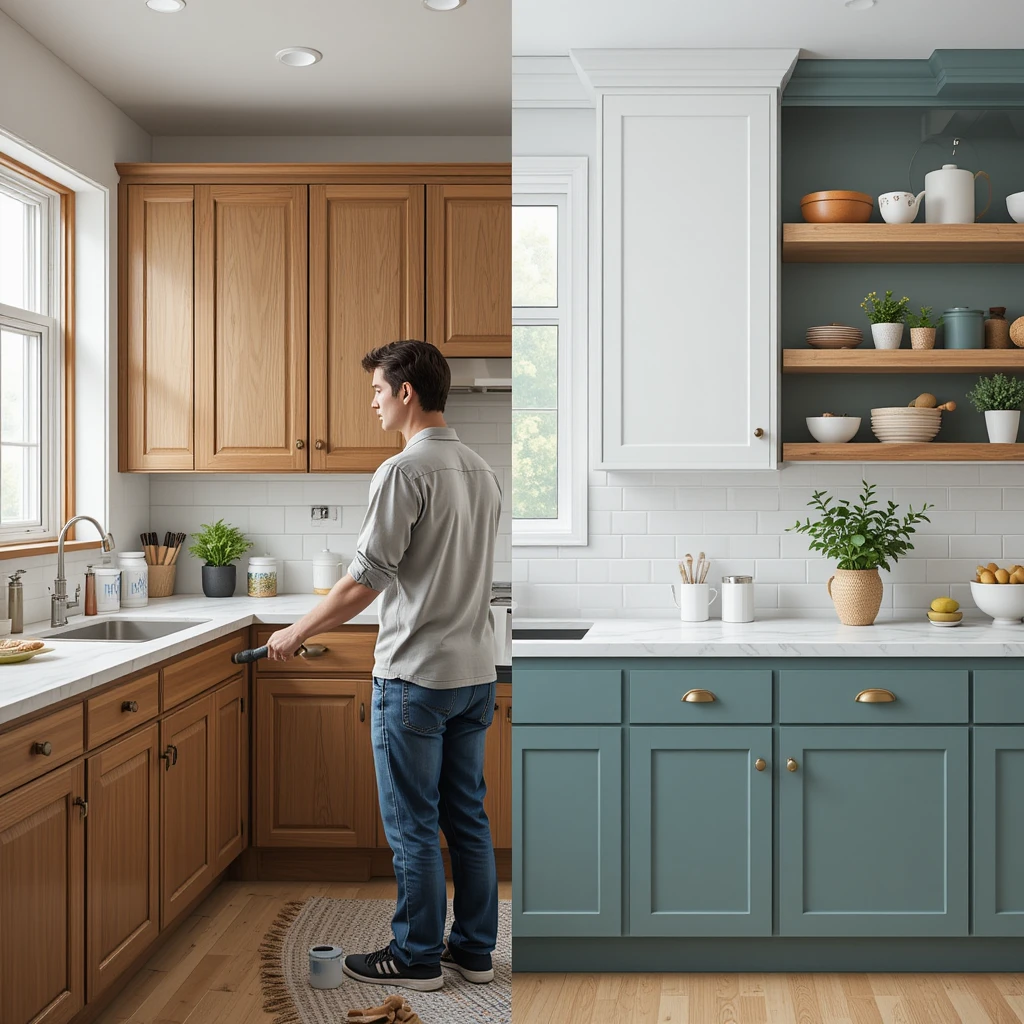
Why Kitchen Cabinet Painting is a Game-Changer
A full kitchen remodel can easily cost tens of thousands of dollars, but kitchen cabinet painting allows you to achieve a similar “wow” factor for a fraction of the price. Instead of replacing perfectly functional cabinets, you simply refresh their look with a new coat of paint.
Some reasons homeowners are opting for cabinet painting in 2025 include:
- Affordability – Save thousands compared to cabinet replacement.
- Customization – Choose your exact color, finish, and style.
- Sustainability – Reduce waste by reusing existing cabinetry.
- Speed – Most painting projects take days instead of weeks.
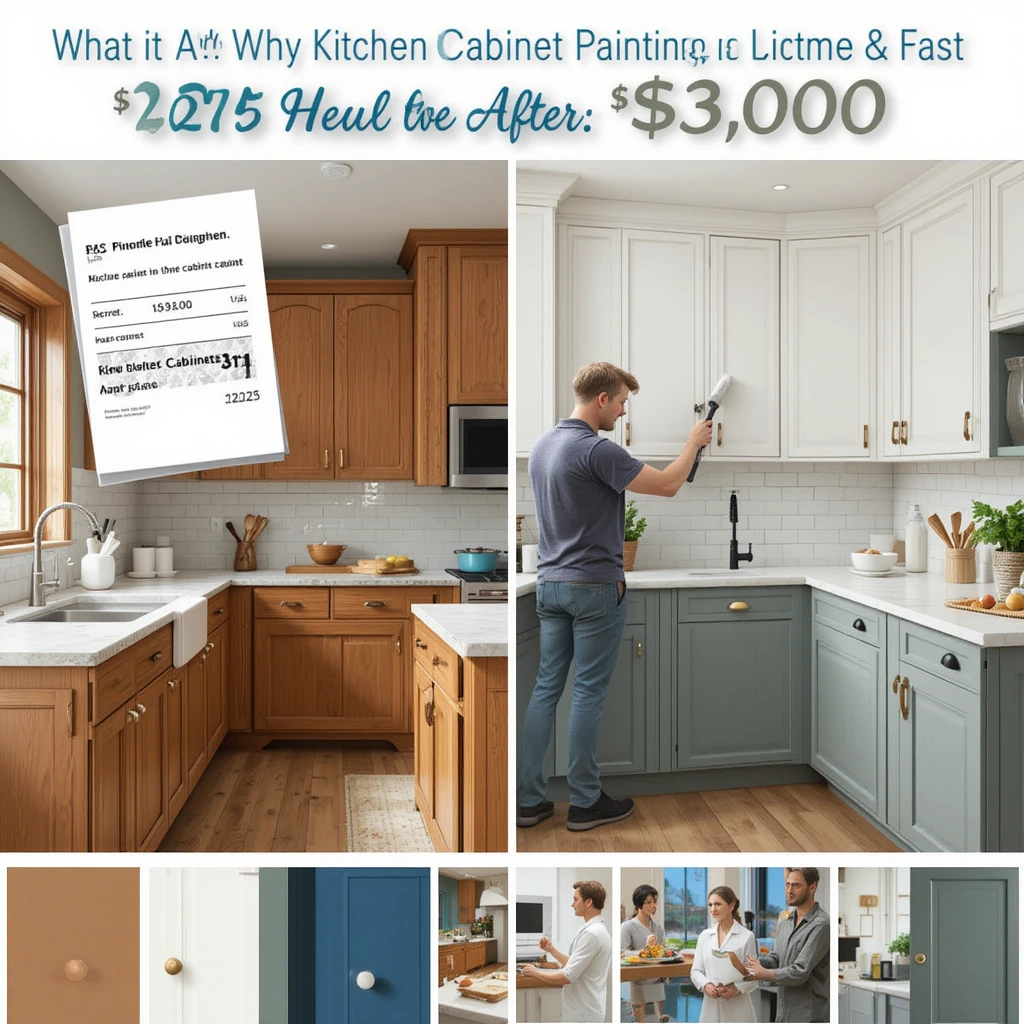
How to Paint Kitchen Cabinets Without Sanding
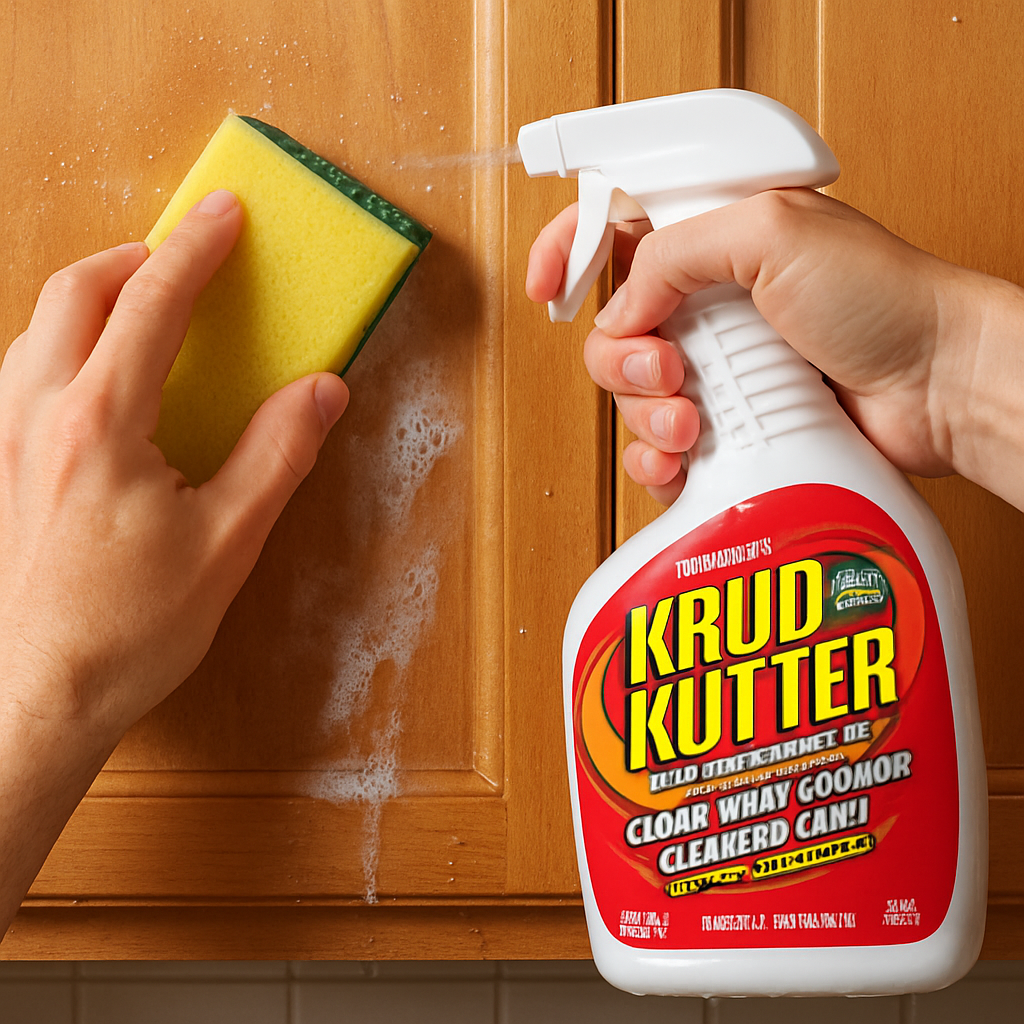
One of the most common questions is: How do you paint kitchen cabinets without sanding?
Many homeowners want to skip sanding because it’s messy and time-consuming. While sanding helps with adhesion, you can bypass it if you follow the right steps:
1. Deep Clean the Cabinets
Grease, grime, and residue will prevent paint from sticking. Use a degreaser like Krud Kutter Original Concentrated Cleaner (a TSP alternative) to scrub surfaces thoroughly.
2. Use a High-Adhesion Primer
Products like bonding primers are designed to grip slick surfaces. Brands like Zinsser BIN or INSL-X STIX are popular in 2025 for no-sand projects.
3. Choose the Right Paint
A durable enamel or hybrid acrylic paint is essential for adhesion and longevity.
4. Apply Thin, Even Coats
Two to three coats will give you a smooth, lasting finish without brush marks.
5. Seal for Protection
A topcoat can help extend the life of your paint kitchen cabinets project, especially in high-traffic kitchens.
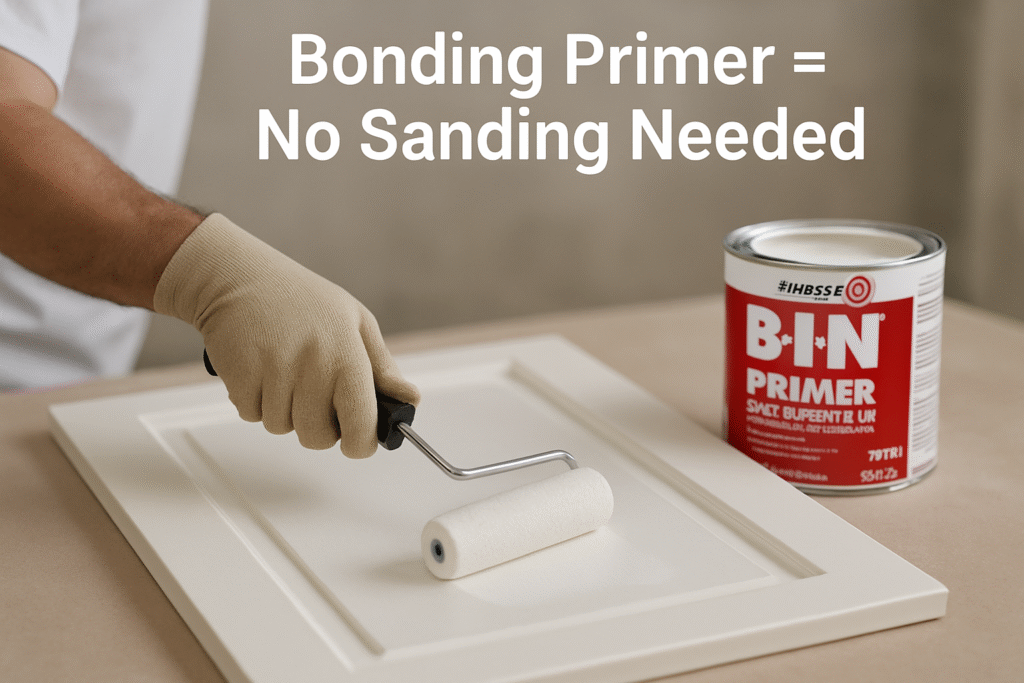
What’s the Most Durable Paint for Kitchen Cabinets in 2025?
Durability is key — nobody wants chipping or peeling after just a few months. In 2025, the most recommended paints for cabinet painting are acrylic alkyd enamels like Benjamin Moore Advance, which offer a smooth, durable finish.
- Acrylic Alkyd Enamels – These combine the smooth finish of oil paint with the easy cleanup of water-based paints.
- Hybrid Urethane-Modified Acrylics – Highly durable and resistant to moisture and grease.
- Professional-Grade Spray Finishes – If you hire a pro, a sprayed finish offers a flawless, factory-like appearance.
When choosing the best paint for cabinets, always look for:
- Washability
- Stain resistance
- Low or zero VOCs for better indoor air quality
For guidance on selecting complementary wall colors, check out How to Choose Paint Colors for Your Home: The Ultimate Guide — a valuable resource when planning your full kitchen makeover.
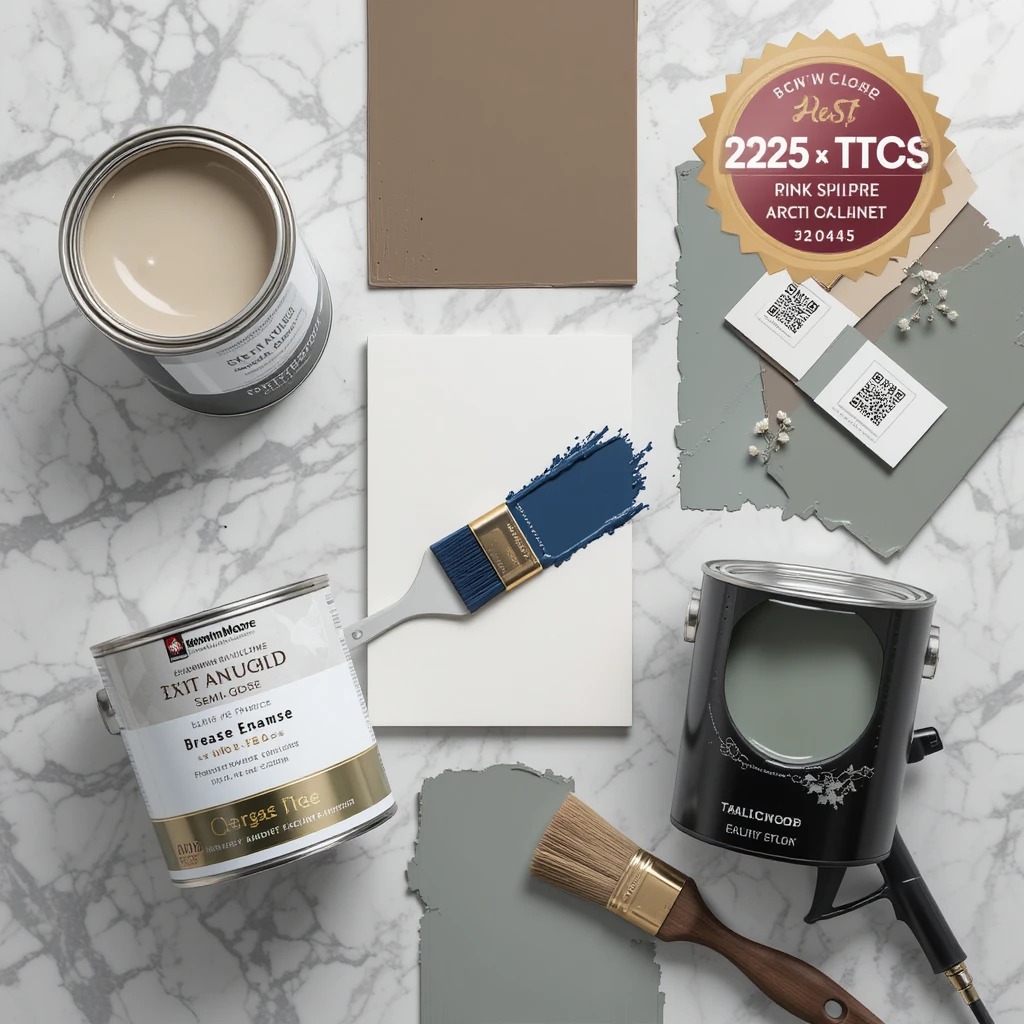
Kitchen Cabinet Painting Cost Professionally
If you’d rather skip the labor, potential mess, and time commitment of DIY cabinet painting, hiring a professional can be an excellent choice. But how much will it set you back?
In 2025, the cost of professional kitchen cabinet painting typically ranges between $1,500 and $6,000 for an average-sized kitchen. However, this is just a ballpark — actual costs vary widely based on several factors. Let’s break it down.
1. Factors That Influence the Cost
a) Kitchen Size and Number of Cabinets
- Small kitchens (8–12 cabinets): $1,500 – $2,500
- Medium kitchens (15–25 cabinets): $2,500 – $4,000
- Large kitchens (30+ cabinets): $4,000 – $6,000+
The more cabinets you have, the more time, paint, and labor are needed.
b) Type of Paint and Finish
- Standard acrylic cabinet paint – Most affordable, durable for everyday use.
- High-end hybrid enamels or alkyd paints – Add $200–$600 to the total.
- Specialty finishes like high-gloss, distressed, or custom color matching – Can increase costs by 15–25% due to extra steps and skill required.
c) Preparation and Repair Work
Not all cabinets are ready for paint right away. If your cabinets have grease buildup, dents, or peeling finish, expect extra charges for:
- Deep cleaning & degreasing – $50–$150
- Wood repairs/filling – $50–$200+ depending on damage
- Old paint or stain stripping – $200–$500 for large kitchens
d) Painting Method
- Spray painting – Produces a flawless, factory-like finish but requires more prep and specialized equipment. Usually 10–20% more expensive than brushing/rolling.
- Brushing & rolling – More affordable but may leave slight brush marks unless done with professional skill.
2. Regional Price Differences
Labor rates differ by location:
- Urban areas (e.g., New York, Los Angeles, Toronto): Higher due to labor costs, averaging $50–$75/hour.
- Suburban areas: Mid-range prices, around $35–$55/hour.
- Rural areas: Can be as low as $25–$40/hour for skilled painters.
3. Additional Costs to Consider
- Hardware replacement (knobs, handles): $3–$15 each
- Color consultation services: $100–$300
- Protective clear coat: $150–$500 extra depending on kitchen size
- On-site vs. off-site painting: Some pros remove cabinet doors and paint them in a controlled environment, which can add moving and transport fees.
4. Timeline and Value
Professional kitchen cabinet painting usually takes 3–7 days, depending on size and complexity. While the upfront cost is higher than DIY, you’re paying for:
- Expert prep work for maximum durability
- High-quality materials that resist chipping and yellowing
- Time savings and less disruption to your daily life
💡 Pro Tip: If you’re going for a high-gloss modern kitchen, professional spraying is worth the investment. The seamless finish is nearly impossible to replicate with a brush at home, and the added durability will help your cabinets look brand new for years.
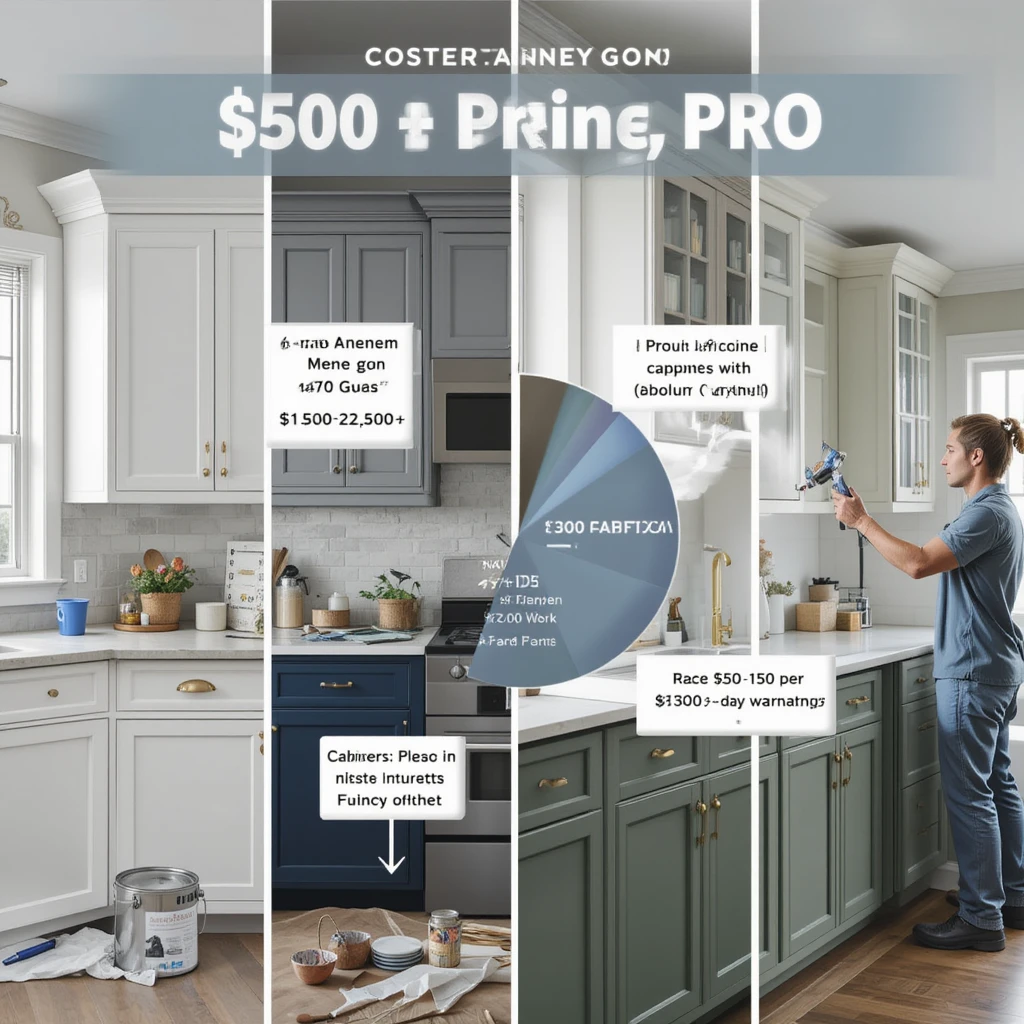
Do Painted Kitchen Cabinets Chip Easily? How Long Do They Last?
One of the most common concerns homeowners have about kitchen cabinet painting is whether the finish will chip, peel, or wear quickly. The truth is, the durability of painted cabinets depends heavily on how well the surface is prepared, the type of paint used, and how much daily wear and tear your kitchen experiences.
When done correctly — especially with high-quality materials and proper prep — painted kitchen cabinets can last 8–10 years before needing a touch-up or repaint. In some cases, well-maintained cabinets have been known to last over a decade without major signs of wear.
Why Some Painted Cabinets Chip Sooner
Cabinet chipping is usually the result of one or more of these issues:
1. Poor Surface Preparation
If grease, dirt, or old finishes aren’t removed before painting, the paint won’t bond properly. Skipping primer or using the wrong type also increases the risk of peeling.
2. Low-Quality Paint
Not all paints are made for cabinets. Wall paints lack the durability needed for frequent handling. Choosing high-quality cabinet-specific enamel or hybrid acrylic paints dramatically improves chip resistance.
3. Environmental Factors
High humidity, steam from cooking, and temperature fluctuations can cause paint to expand and contract, leading to cracks or chips over time.
4. Heavy Daily Use
If your kitchen is a high-traffic zone where cabinets are opened dozens of times a day, normal wear will happen faster — especially on frequently used doors like those near the sink or pantry.
Tips to Maximize the Lifespan of Painted Cabinets
If you want your DIY cabinet painting or professional job to last as long as possible, follow these maintenance practices:
- Use a protective topcoat – Adds an extra layer of durability against scratches and moisture.
- Avoid harsh cleaners – Use mild soap and water instead of abrasive chemicals.
- Install soft-close hinges – Reduces impact wear over time.
- Wipe spills quickly – Prevents moisture from seeping into the wood or finish.
- Add cabinet hardware – Handles and knobs reduce direct contact with painted surfaces, minimizing hand oils and dirt buildup.
Average Lifespan Based on Finish Type
| Finish Type | Durability | Chip Resistance | Expected Lifespan |
|---|---|---|---|
| Basic latex paint | Moderate | Low | 3–5 years |
| Acrylic enamel | High | High | 8–10 years |
| Oil-based enamel | Very high | Very high | 10–12 years |
| Professional sprayed lacquer | Exceptional | Very high | 12+ years |
💡 Pro Tip: If you want to further extend the life of your painted cabinets, schedule a quick touch-up session every 2–3 years for high-use areas. This small maintenance effort can keep your kitchen cabinet painting looking fresh and flawless for over a decade.
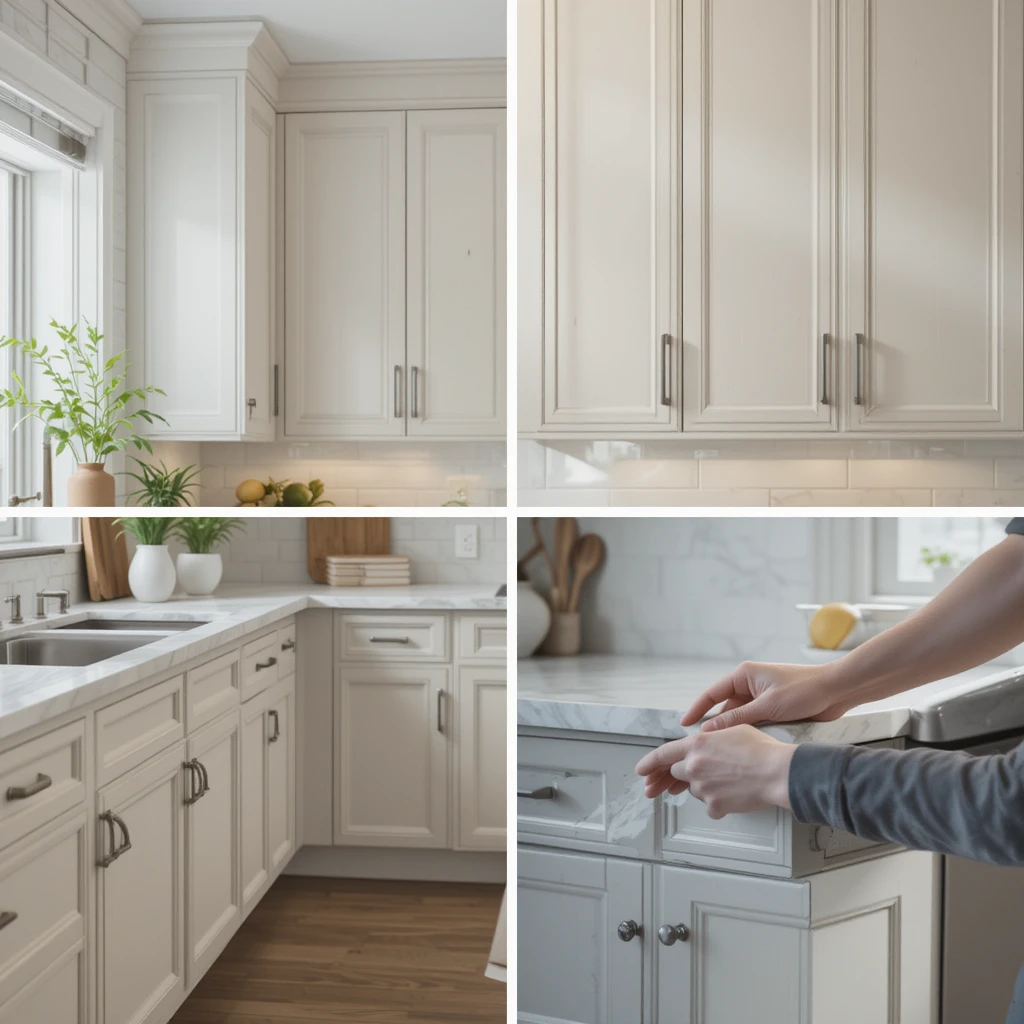
Painted Kitchen Cabinets: Pros and Cons
Before committing, it’s wise to weigh painted kitchen cabinets pros and cons:
Pros:
- Affordable transformation
- Custom color flexibility
- Eco-friendly option
- Can increase home value
Cons:
- Requires meticulous prep
- Not suitable for all wood types
- May need touch-ups over time
- Finish can wear in high-use areas
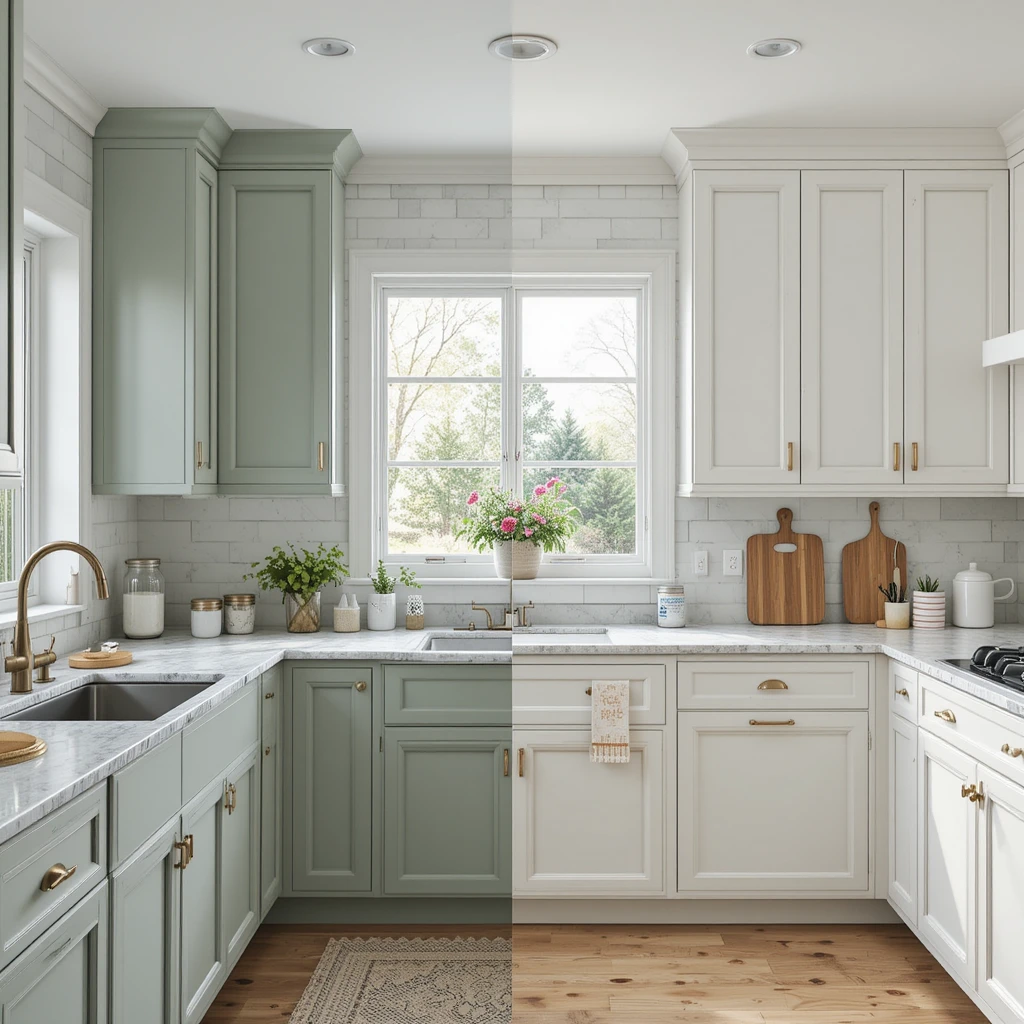
Should I Paint or Reface My Kitchen Cabinets?
When planning a kitchen update, many homeowners struggle with the choice between kitchen cabinet painting and cabinet refacing. Both options can transform your space without the cost of a full remodel, but they serve different purposes and budgets.
The decision ultimately depends on your cabinet condition, desired style changes, and how much you want to spend.
When Painting is the Better Choice
You should consider DIY cabinet painting or professional painting if:
- Cabinets are structurally sound – No warping, water damage, or loose joints.
- You like the current door style – Painting keeps the same design, just with a fresh color.
- You want the most budget-friendly option – Costs are typically 50–70% less than refacing.
- You prefer a quick update – Most painting projects take 3–7 days.
- You want a customizable color – Painting allows endless shade choices, including trendy two-tone styles.
💡 Example: A homeowner with classic shaker-style cabinets in good condition can achieve a dramatic modern look simply by choosing a bold navy or crisp white paint.
When Refacing is the Better Choice
Cabinet refacing is a good option if:
- Cabinets are solid but outdated in style – You want new doors, drawer fronts, and veneer for the boxes.
- You want upgraded materials – Like replacing laminate doors with solid wood.
- Cabinet interiors are in good shape – Refacing doesn’t address damaged interiors.
- You prefer a long-term upgrade – Refacing often lasts longer than paint alone.
- You want a factory finish – Veneered and new doors look completely new and can include modern features like soft-close hinges.
💡 Example: A homeowner with 90s-style arched oak doors might choose refacing to swap them for flat-panel modern fronts without rebuilding the cabinets.
Cost Comparison: Painting vs. Refacing
| Option | Average Cost (2025) | Project Timeframe | Expected Lifespan | Best For |
|---|---|---|---|---|
| Painting | $1,500 – $6,000 | 3–7 days | 8–10 years | Budget-friendly style change |
| Refacing | $6,000 – $15,000 | 1–2 weeks | 15–20 years | Major style upgrade without full remodel |
Which Option Adds More Value to Your Home?
- Painting is perfect if you want to make your kitchen more appealing for resale quickly and affordably.
- Refacing offers a bigger return for long-term homeowners who want a higher-end look without tearing out cabinets.
💡 Pro Tip: You can also combine the two approaches — paint the cabinet boxes but replace the doors for a fresh yet affordable hybrid update. This method keeps costs low while delivering a modern look.
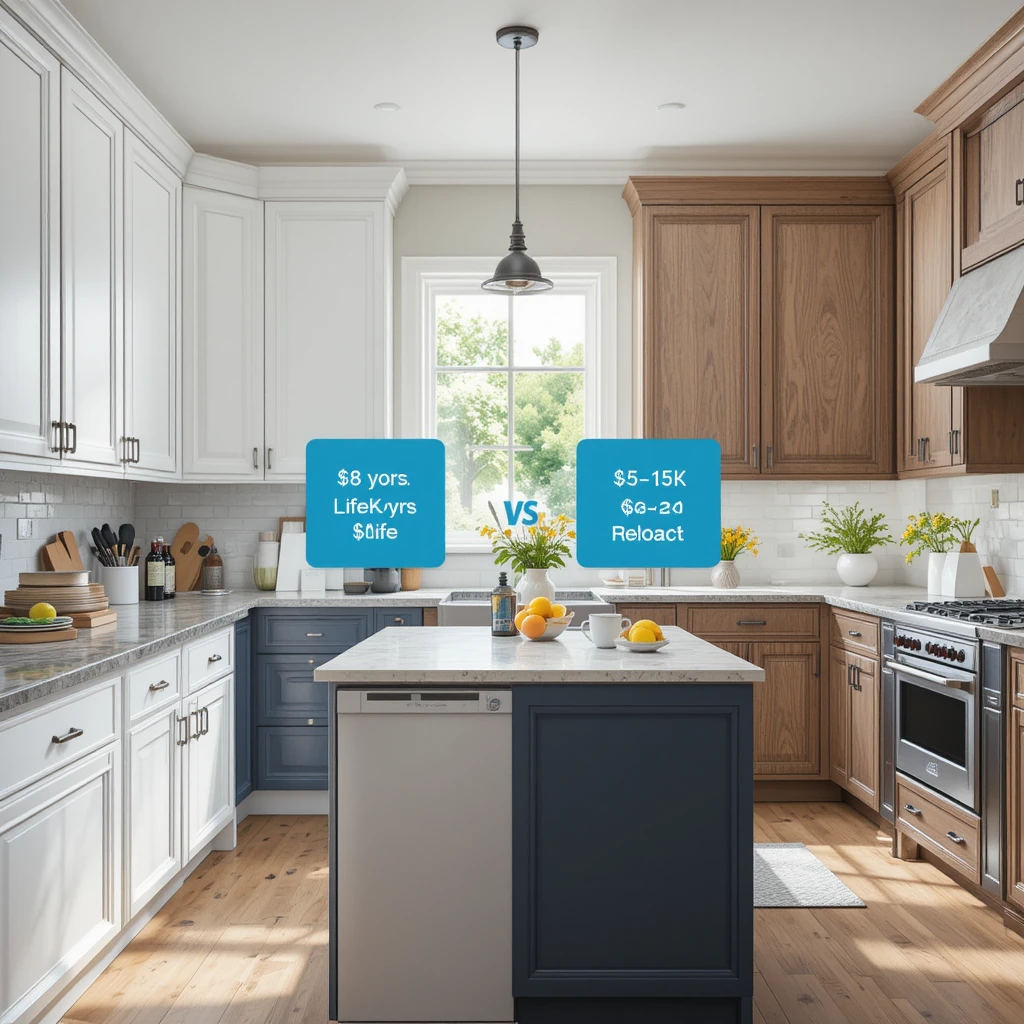
Step-by-Step DIY Cabinet Painting Guide
For homeowners ready to tackle DIY cabinet painting, here’s the process:
- Remove doors and hardware
- Clean and degrease surfaces
- Repair dents and scratches
- Prime with a bonding primer
- Apply 2–3 coats of paint
- Seal with a protective topcoat
- Reattach hardware and doors
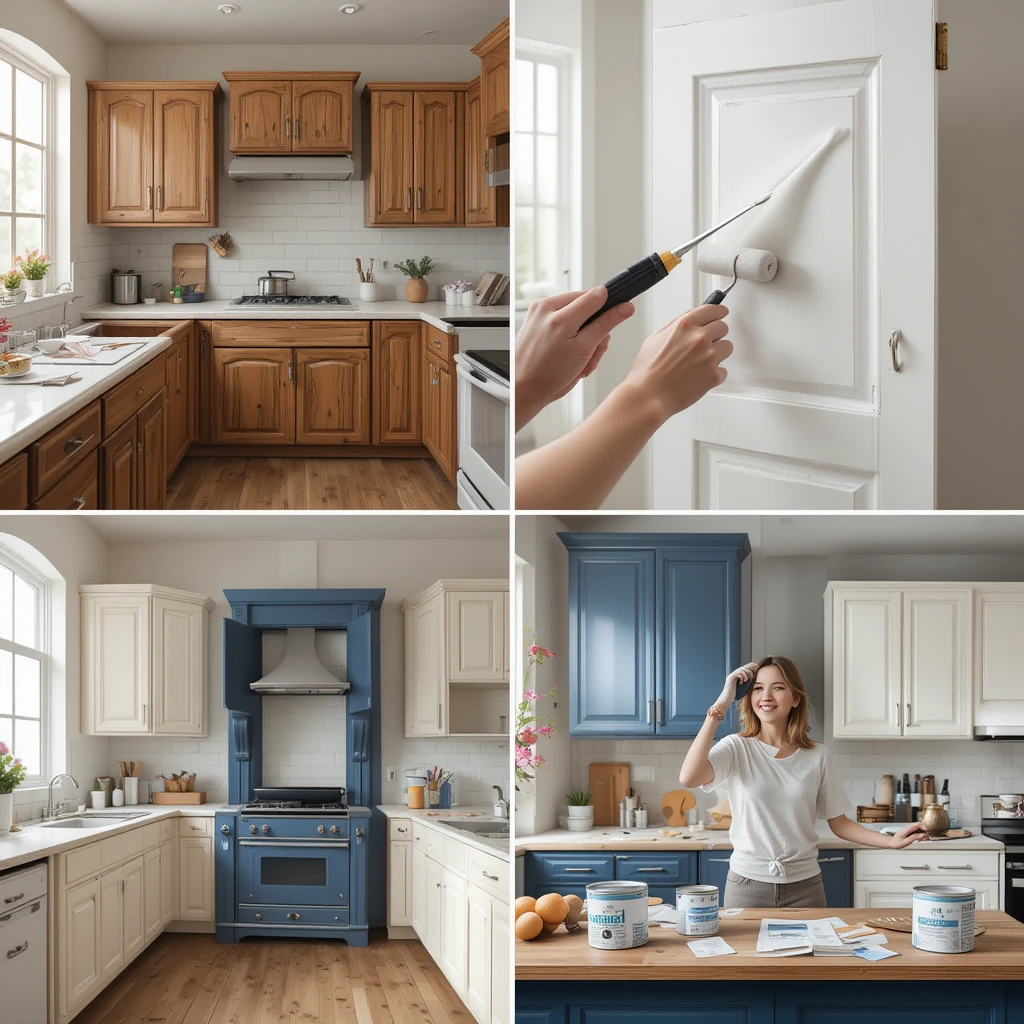
2025 Kitchen Cabinet Color Trends
Color is one of the most transformative elements in kitchen cabinet painting, and in 2025, the trends strike a balance between timeless elegance and bold self-expression. The right paint choice doesn’t just refresh your cabinets — it can redefine the entire mood, flow, and personality of your kitchen.
Here are the top 2025 cabinet color trends and why they’re making waves in home design:
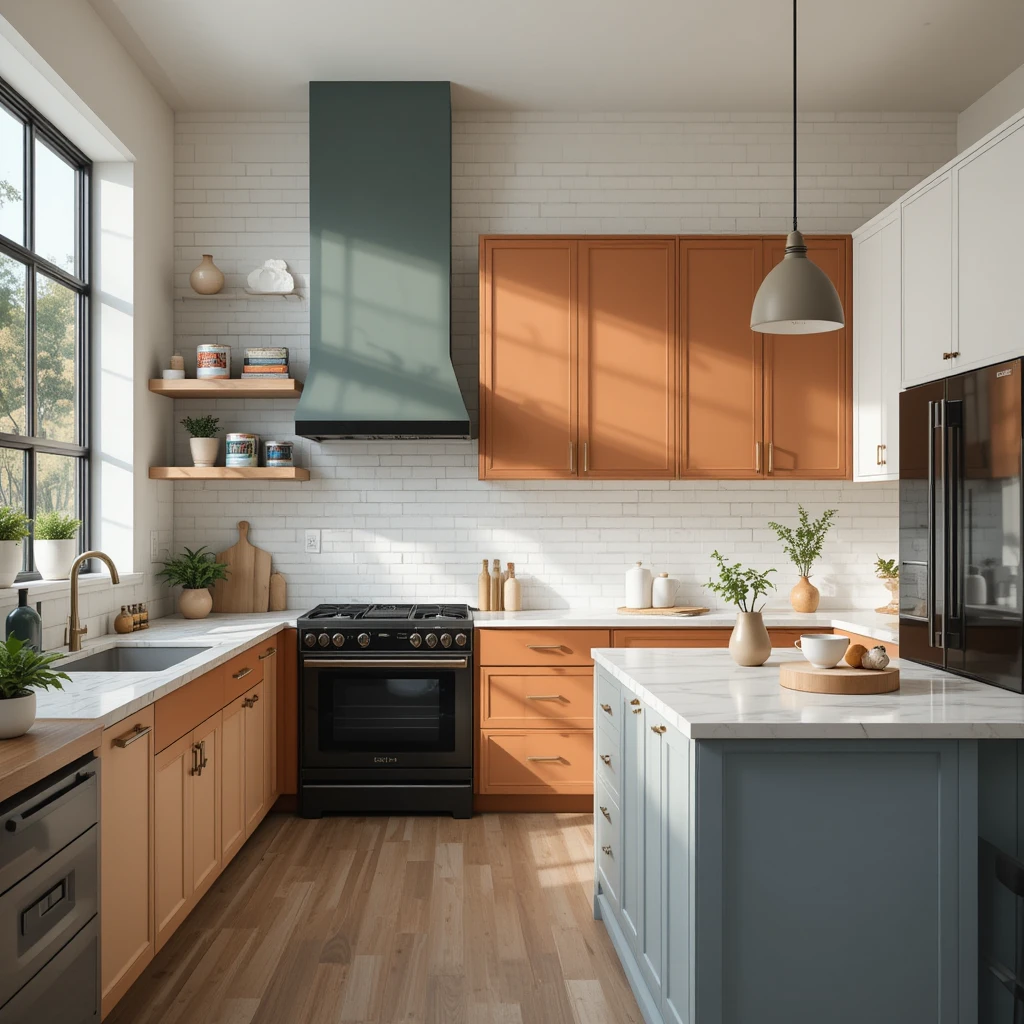
1. Classic White – Timeless and Bright
White remains the most sought-after choice in kitchen cabinet painting because it’s versatile, light-enhancing, and universally appealing. A classic white kitchen cabinet painting project can instantly make small kitchens feel more spacious while blending seamlessly with any countertop or backsplash style.
- Why it’s trending: Minimalist design influence and the enduring appeal of white make it a safe, stylish choice that stays relevant through changing trends.
- Best for: Traditional, farmhouse, coastal, and Scandinavian-inspired kitchens that benefit from a bright, airy atmosphere.
- Pro Tip: Choose a soft, warm white for a cozy, welcoming vibe, or opt for a crisp, pure white for a clean, modern aesthetic.
2. Navy Blue – Modern and Bold
Navy blue is the “new neutral” of 2025 — a rich, dramatic choice in kitchen cabinet painting that still works beautifully with a variety of finishes. This deep, elegant shade pairs especially well with warm metallic accents like brass or gold hardware, creating a luxurious yet approachable feel.
- Why it’s trending: Navy blue in kitchen cabinet painting adds depth, sophistication, and visual weight without overpowering the space, making it an ideal choice for homeowners who want a bold yet versatile look.
- Best for: Transitional or modern kitchens seeking an upscale statement that blends seamlessly with light countertops and backsplashes.
- Pro Tip: Use navy for lower cabinets and keep the uppers in a crisp white to create a balanced two-tone effect that feels both fresh and timeless.
3. Warm Taupe – Cozy and Inviting
Earthy neutrals like taupe and greige (a mix of gray and beige) are becoming a popular choice in kitchen cabinet painting for 2025. These shades bring a sense of warmth and approachability while maintaining a refined, elegant look.
- Why it’s trending: Warm taupe in kitchen cabinet painting aligns perfectly with the 2025 focus on comfort-driven interiors and natural palettes, making kitchens feel more inviting and lived-in.
- Best for: Rustic, farmhouse, Japandi, or organic modern kitchens where natural textures and cozy tones are key.
- Pro Tip: Pair taupe-painted cabinets with matte black or bronze hardware for an understated yet sophisticated finish.
4. Matte Black – Sleek and Luxurious
Once considered too dark for kitchens, matte black has found its place in high-end cabinet painting projects. It creates an ultra-modern, moody atmosphere and contrasts beautifully with light countertops.
- Why it’s trending: High-contrast, luxurious feel with a minimalist edge.
- Best for: Industrial, modern, and contemporary kitchens.
- Pro tip: Add under-cabinet lighting to enhance visibility and highlight the paint finish.
5. Two-Tone – Balanced and Eye-Catching
Two-tone kitchen cabinet painting is one of the most creative ways to make your kitchen stand out in 2025. This design approach typically features lighter uppers and darker lowers, creating visual contrast while keeping the space bright, open, and balanced.
- Why it’s trending: Two-tone kitchen cabinet painting adds visual interest and breaks up large cabinet runs without overwhelming the design. It’s a modern twist that works equally well in small and large kitchens.
- Best for: Any kitchen style — from farmhouse to contemporary — as long as the chosen colors complement each other and the surrounding finishes.
- Pro Tip: For a timeless yet stylish look, combine a neutral upper like soft white or light taupe with a bold lower shade such as forest green, deep navy, or charcoal. This approach allows you to experiment with color while maintaining an elegant overall feel.
Choosing the Right Color for Your Home
Selecting a cabinet color isn’t just about following trends — it’s about choosing a shade that complements your flooring, countertops, backsplash, and natural lighting. For expert help, check out How to Choose Paint Colors for Your Home: The Ultimate Guide.
💡 Pro Tip: Always test paint samples in your actual kitchen lighting before committing — colors can shift dramatically under warm or cool light.
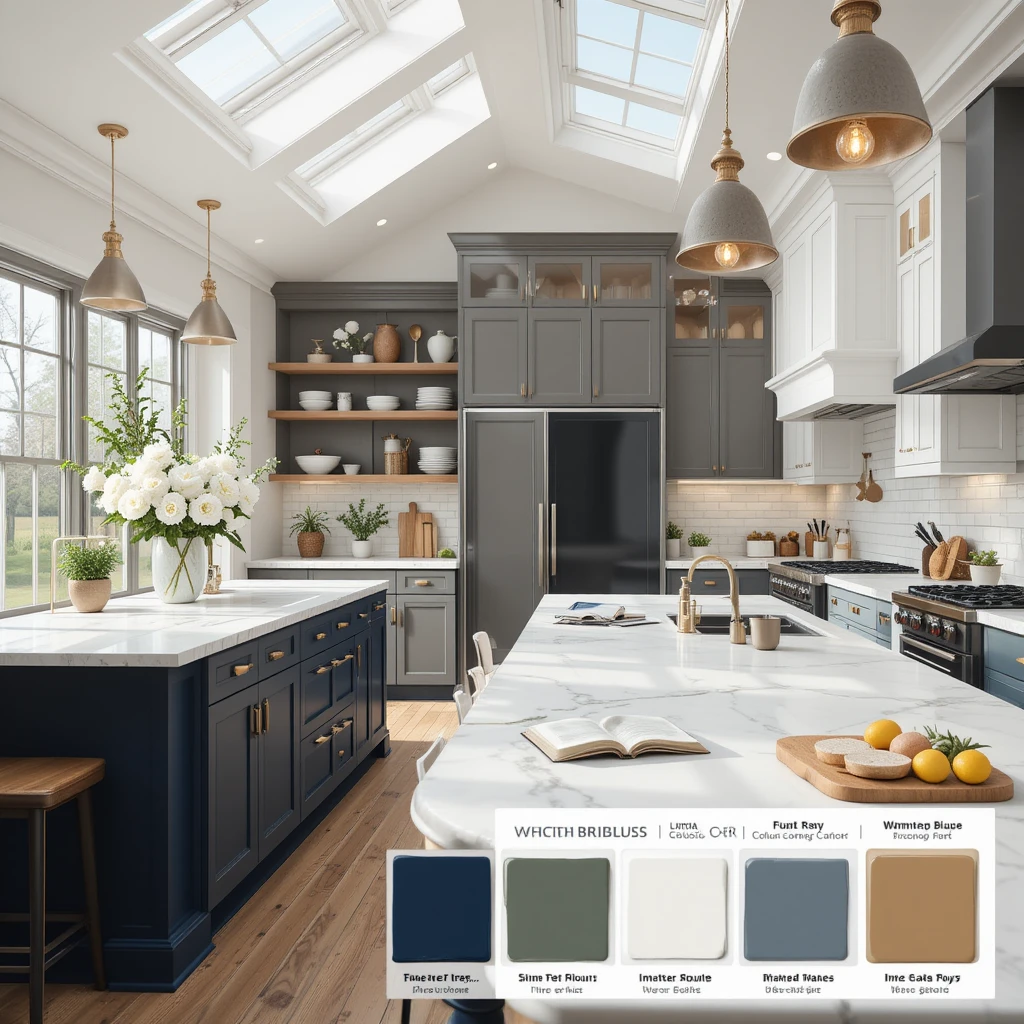
Final Thoughts
Whether you choose DIY cabinet painting or hire a professional, the results can be stunning and long-lasting. By choosing the best paint for kitchen cabinets, following proper preparation steps, and keeping up with care, you can enjoy a refreshed kitchen for years.
Incorporating both style and function, kitchen cabinet painting in 2025 is more than just a trend — it’s a smart investment in your home’s value and beauty.
